Emirati Food: Basic Overview
Common Ingredients
Common Cooking Methods
Courses
Meals
Key Taste
Eating Etiquette
Meal Presentation
Culinary Festivals
Influence and Fusion
Popular Types of Emirati Food
-
Grilled and Barbecued Dishes
In Emirati cuisine, grilled and barbecued dishes are all about the flame.
Meats, often chicken or lamb, are marinated in a mix of spices and herbs, and then cooked to perfection over an open flame.
Whether it’s skewers or whole pieces of meat, the grill brings out a juicy, savory taste.
-
Rice Dishes
Rice is a staple in Emirati meals, serving as the base for many dishes.
It’s cooked with a variety of spices, meats, and vegetables. The rice absorbs the flavors of the ingredients it’s cooked with.
From the rich and aromatic biryani to the hearty majboos, rice dishes in the UAE are a blend of textures and tastes.
-
Stews
Stews are vital to Emirati cuisine, combining meat, vegetables, and spices in a rich, flavorful sauce.
These dishes are slow-cooked, often shared among family and friends.
Stews can vary from the tomato-based salona to the thicker, lentil-enriched madroob.
-
Desserts
Desserts in the UAE range from sweet and syrupy luqaimat to rich buttery asida, often featuring ingredients like dates, honey, and nuts.
Whether it’s the crunchy exterior of a fried dessert or the smooth, creamy filling of a pastry, Emirati sweets are a perfect end to any meal.
Emirati dishes are those widely enjoyed in the United Arab Emirates (UAE), merging influences from Middle Eastern delicacies and Asian culinary creations.
Originating from the UAE’s Bedouin heritage, the cuisine is known for its simple yet rich flavors. It focuses on meats like chicken, beef, lamb, and seafood, alongside grains, dairy, fruits, and vegetables.
Key spices such as saffron, cardamom, turmeric, dates, honey, nuts, and creams are essential for adding distinct aromas and tastes, especially to sweet dishes.
Traditional cooking methods include slow cooking to tenderize meats, grilling, and baking, particularly for bread and kebabs. These techniques and communal dining underscore the Emirati values of hospitality and sharing.
Emirati meals typically start with appetizers or mezze, proceed to a main course featuring meat and grains, and end with sweet desserts and tea or coffee.
In this guide, I will show you the most famous dishes from the UAE. I’ll explore what makes Emirati cuisine stand out, including its well-known dishes, what gives it worldwide fame, and how it stays healthy.
You’ll also learn about the different influences that have shaped Emirati dishes, the importance of certain dishes in celebrations, how to eat properly according to local customs, and tips for matching dishes with drinks.
Ready to start? Let’s go!
27 Popular Emirati Dishes with Filters
Discover 27 beloved Emirati dishes, categorized by global popularity and filterable by ingredients, flavors, cooking methods, dish types, and meal times
Whether you’re interested in traditional delicacies, national favorites, or street eats, the filtering options cater to all preferences.
Shawarma
- Street Food
- Traditional
Shawarma is a type of street food synonymous with Middle Eastern cuisine, including that of the United Arab Emirates. It’s traditionally prepared by stacking slices of marinated meat, often chicken, lamb, or beef, on a vertical spit.
The meat is then slow-roasted as it turns beside a heat source, with thin slices shaved off to serve. In the UAE, shawarma is often wrapped in a flatbread like pita, garnished with vegetables, fries, and sauces such as tahini or garlic cream.
Hummus
- Street Food
- Traditional
Hummus is a traditional dish in Emirati cuisine and across the Middle East. It’s a smooth, creamy spread made from cooked, mashed chickpeas blended with tahini, olive oil, lemon juice, garlic, and salt.
Hummus is often garnished with paprika, parsley, or whole chickpeas and served with bread for dipping. Its taste is nutty, tangy, and rich, and it can accompany various meals or be enjoyed on its own as a snack.
Falafel
- Street Food
- Traditional
Falafel is a widely loved street food in the UAE and the Middle East. It consists of deep-fried balls or patties made from ground chickpeas or fava beans, often mixed with herbs and spices for that extra kick.
Falafel is crunchy on the outside, tender on the inside, and bursting with flavors of herbs like parsley and coriander.
It’s commonly served in pita bread with salads, pickled vegetables, and tahini sauce.
Knafeh
- Street Food
- Traditional
Knafeh, known as Kunafa, is a traditional dessert special in the UAE and the Middle East. This sweet treat is made from thin noodle-like pastry or semolina dough, soaked in sweet, sugar-based syrup, and typically layered with cheese or other sweet fillings.
The top of the dessert is often crisped to a golden brown and sprinkled with crushed pistachios. Knafeh’s taste is a perfect balance of sweetness and the slight saltiness of the cheese.
It’s widely enjoyed during Ramadan and Eid celebrations, serving as a festive end to communal fast-breaking meals.
Tabbouleh
- Traditional
Tabbouleh is a salad commonly savored in the Middle East, including UAE. This dish is primarily made from finely chopped parsley, with tomatoes, mint, onion, and soaked bulgur.
It’s dressed in olive oil and lemon juice, bringing out a tangy flavor that complements its crisp texture. Tabbouleh is often enjoyed as a side dish, perfect for balancing out richer main courses with its light, refreshing taste.
It’s a common fixture in festive meals and gatherings, especially appreciated during the hot summer months for its cooling effect.
Majboos
- Traditional
Majboos, also known as Machboos or Kabsa in some regions, is a traditional rice dish of Emirati cuisine. This hearty meal involves cooking rice with a rich mixture of spices, alongside meat like chicken, lamb, or fish.
The spices, including but not limited to cardamom, cloves, cinnamon, and bay leaves, infuse the dish with a warm, aromatic flavor.
Majboos is often served during important events such as weddings and Eid. Its popularity extends across the Arabian Peninsula, with each country and even family boasting their variation.
Fattoush
- Traditional
Fattoush is a traditional Levantine salad known for its refreshing taste and the crunch of toasted or fried pieces of pita bread mixed with fresh vegetables.
Typically, fattoush includes lettuce, radishes, tomatoes, cucumbers, and herbs like mint and parsley, all dressed in a zesty vinaigrette often made with sumac, which adds a tangy, lemony flavor.
It’s a common side dish in Emirati cuisine, particularly favored during the hot summer months and at gatherings.
Biryani
- Street Food
- Traditional
Biryani is a savory rice dish in Emirati cuisine that combines rice with spices, meat, and sometimes vegetables. It is favored for its distinct taste, often rich and aromatic, balanced by the tender textures of meat (such as chicken, lamb, or beef) and the fluffy, spiced rice.
Among its famous variations, the chicken biryani and mutton biryani stand out, each offering a twist on the classic recipe.
It is frequently served during festive times and significant celebrations like Eid al-Fitr, Eid al-Adha, and National UAE Day.
Manakish
- Street Food
Manakish, often referred to as the pizza of the Arab world, is a type of flatbread that’s a popular street food in Emirati cuisine and throughout the Middle East. The bread is typically topped with za’atar (a blend of dried herbs, sesame seeds, and sumac), cheese, or ground meat.
Baked in a wood-fired oven, manakish has a crispy exterior and a soft, fluffy interior, with the toppings adding a savory or herby flavor. It’s often enjoyed for breakfast or brunch, sometimes folded and eaten like a sandwich.
Variations of manakish might include different combinations of toppings, such as labneh (strained yogurt) or a mix of vegetables.
Balaleet
- Traditional
Balaleet is a traditional Emirati breakfast dish with sweetened vermicelli noodles topped with a savory omelet. Balaleet often graces breakfast tables during celebrations like Eid al-Fitr, marking the end of Ramadan.
Its popularity extends beyond the UAE, finding favor in other Gulf countries where variations include slight differences in the noodles’ sweetness or the omelet’s seasoning.
Luqaimat
- Street Food
- Traditional
Luqaimat, also known as Lgeimat, is a beloved traditional Emirati dessert, often enjoyed during Ramadan and Eid. These are small, deep-fried dough balls that are crispy on the outside and soft on the inside, typically drizzled with date syrup or honey and sprinkled with sesame seeds.
Variations include different types of syrup, such as saffron-infused syrup or a dusting of powdered sugar. Luqaimat is not only a favorite in the UAE but also enjoys popularity across the Middle East.
Samak Mashwi
- Traditional
Samak mashwi is a traditional Emirati grilled fish dish. This dish typically features a whole fish, often marinated with a blend of spices and herbs before being perfectly grilled.
While variations depend on the type of fish used, common choices include hammour and seabream, which are favored for their firm flesh and mild flavor.
Samak mashwi is a staple at gatherings and festive occasions. Its popularity extends to other countries in the Middle East, where seafood plays a significant role in the cuisine.
Shish Tawook
- Street Food
Shish tawook is a type of Emirati grilled chicken skewer, marinated in a mixture of garlic, lemon, and spices before being cooked. The taste of shish tawook is tangy and savory, with a hint of smokiness from the grill.
Its juicy and tender texture makes it a favorite among children and adults. Shish tawook is commonly served with garlic sauce, fries, and pita bread.
Ghuzi
- National
- Traditional
Ghuzi, also known as khuzi or shuwaa, is a traditional type of roasted lamb or mutton dish that holds a special place in Emirati cuisine. This dish is often considered a national dish of the UAE.
It features a roasted lamb or mutton served on top of a bed of rice generously garnished with nuts and vegetables. The taste of Ghuzi is rich and aromatic, with the meat being tender and flavorful, thanks to the blend of spices used in its preparation.
While lamb is more commonly used, camel is a traditional and authentic choice for this dish. It’s commonly enjoyed in large gatherings and festive occasions like Eid celebrations. Ghuzi is enjoyed in the UAE and other Gulf countries.
Harees
- National
- Traditional
Harees, also known as Al Harees, is a national Emirati dish made from wheat and meat (commonly chicken or lamb) cooked together for several hours until they form a smooth, porridge-like consistency.
It is a common favorite during the holy month of Ramadan and is a staple at Iftar meals, making it an integral part of important religious celebrations or UAE National Day.
Shakshuka
- Traditional
Shakshuka, a beloved breakfast dish in Emirati cuisine, consists of poached eggs nestled in a sauce of tomatoes, chili peppers, onions, and a mix of aromatic spices. Often seasoned with cumin, paprika, and sometimes fresh herbs, shakshuka’s taste is comforting and bold.
Shakshuka is not only a staple in the Middle East. Still, it has also gained popularity in parts of North Africa and worldwide, with variations including feta cheese or chorizo.
Madrouba
- Traditional
Madrouba (or Madrooba), another traditional dish in Emirati cuisine, is a hearty and comforting porridge-like meal. It is made by slowly cooking chicken or fish with rice, butter, and a blend of spices until the ingredients meld into a creamy, smooth texture.
The spices, often including turmeric and bezar (a traditional Emirati spice mix), give Madrouba its distinctive yellow color and a warm, inviting flavor profile.
Madrouba is common in other Gulf countries, each adding its own local twist to the recipe.
Tharid
- Traditional
Tharid, a traditional stew often referred to as the “dish of the prophets,” holds a special place in the heart of the local Emirati culture.
Tharid consists of pieces of bread soaked in a savory broth enriched with meat (usually lamb or goat) and vegetables. It’s known for its association with the holy month of Ramadan and is often enjoyed during Iftar meals. This dish is frequently enjoyed in the UAE and other Arab countries.
Salona
- Traditional
Salona is a traditional Emirati stew with mixed vegetables and meat, fish, or chicken flavors. The stew’s base is a tomato and tamarind sauce, which gives it a tangy and slightly sour taste.
Salona is an excellent choice for family meals. It’s especially comforting during the cooler months in the UAE and across the Gulf region.
Margoogat
- Traditional
Margoogat is a hearty stew in UAE comprising tender meat, typically chicken or lamb, and assorted vegetables, all simmered in a thick, tomato-based sauce that’s been seasoned with a variety of Middle Eastern spices.
The unique feature of Margoogat is the inclusion of thin, hand-torn pieces of dough added to the stew.
Asida
- Traditional
Asida is a dish often found at the heart of Emirati celebrations and gatherings. It is a cooked wheat flour or semolina dough, served with generous ghee (clarified butter) and sometimes accompanied by honey or date syrup.
The dish has a soft, smooth texture and a rich, buttery taste, with the sweetness of the accompanying syrup.
Asida is particularly popular during religious festivals, such as Eid, where it’s shared among family and friends as a symbol of togetherness and celebration.
Stuffed Camel
- Traditional
Stuffed camel is a dish that stands out at big celebrations in the Arabian Gulf, especially in Emirati cooking. It shows off the area’s well-known warm welcome and generosity.
To make it, cooks stuff a camel with smaller animals like lambs or sheep, chickens, fish, and eggs. It’s like a food version of those Russian nesting dolls. Each part is well-seasoned and cooked just right, giving you a mix of different tastes and textures.
People usually serve this dish at big events, like weddings and festivals, to mark special times and get-togethers. But, because it’s quite complex to make, it’s not something you’d find in a regular meal at home. It’s more for very special moments.
Khabees
- Traditional
Khabees is a traditional Emirati dessert primarily made from flour, cooked with clarified butter, sugar, and various spices such as cardamom and saffron. The texture is crumbly, and the taste perfectly balances sweetness with hints of aromatic spices.
It’s often enjoyed during festive occasions like Eid and holidays. Khabees has variations, including adding nuts or rose water.
Jasheed
- Traditional
Jasheed is a savory stew featuring finely shredded shark meat. However, more contemporary versions may use other types of fish, cooked with a blend of spices, onions, and sometimes tomatoes.
The fish is cooked until tender, absorbing the aromatic spices, and is then served over a bed of rice. It’s a traditional dish often enjoyed in family gatherings and represents the maritime heritage of the Emirati people.
Maqluba
- Traditional
Maqluba is a favorite dish in the UAE and the Middle East. Its name translates to “upside down,” a reference to flipping the pot when serving, which reveals a beautifully layered dish of rice, vegetables, and meat, often chicken or lamb.
The rice absorbs the flavors of the spices, meat, and vegetables during cooking. Maqluba is associated with hospitality and is often served to guests or during special occasions.
Chebab
- Street Food
- Traditional
Chebab is the Emirati version of pancakes but with a twist that sets them apart from their Western counterparts. These are slightly fermented pancakes, flavored with cardamom and saffron.
Adding date syrup or honey when serving adds a sweet contrast to the subtle spiciness of the cardamom and the earthy notes of saffron.
Chebab is typically enjoyed for breakfast or as a snack, often accompanied by tea or coffee. Its popularity extends beyond the UAE, with variations found in other Gulf countries.
Khamir Bread
- Street Food
- Traditional
Khamir bread, also known as khameer bread, is a traditional type of yeast-leavened bread in Emirati cuisine. This bread is light and airy, with a slightly sweet taste.
This bread is commonly served with honey, cheese, or even with a savory stew. While it’s predominantly a staple in the United Arab Emirates, its popularity has spread to neighboring Gulf countries.
This bread is commonly served with honey, cheese, or even with a savory stew. While it’s predominantly a staple in the United Arab Emirates, its popularity has spread to neighboring Gulf countries.
Which Influences Shape Emirati Dishes?
It’s time to explore the mix of influences that shape its delicious dishes:
What Are the Roles of Dishes in Emirati Important Celebrations?
Below is how dishes play a big role in Emirati celebrations, bringing people together and highlighting their rich culture.
Understanding the significance of these dishes leads to a deeper appreciation of the dining etiquette observed in the UAE.
What Are the Dining Etiquettes in UAE?
Here are some key aspects of dining etiquette in the UAE:
These etiquettes extend to choosing the right beverages, complementing Emirati dishes’ rich flavors, and enhancing the overall dining experience.
Which Beverages to Pair with Emirati Dishes?
Here are some beverage pairing suggestions that complement the characteristics of Emirati cuisine:
Pairing drinks from the UAE with dishes involves considering the flavors and ingredients common in the cuisine. These pairings enhance the dining experience and make each meal more enjoyable and balanced.
I hope you will have a great trip. Do not forget to introduce it to others around you. In particular, share your thoughts and questions in the comment section; I’m eager to hear from you. Thanks a lot.


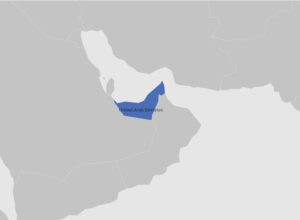
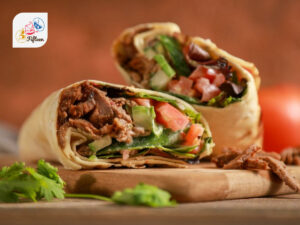
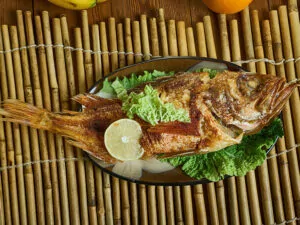
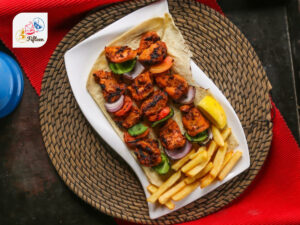
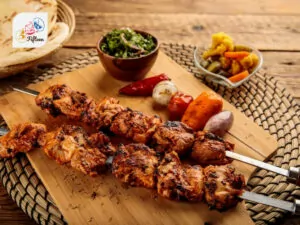
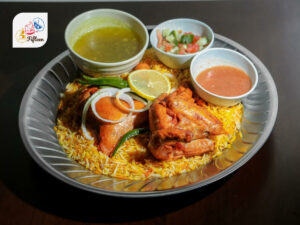
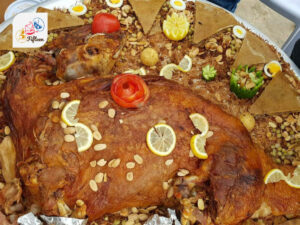

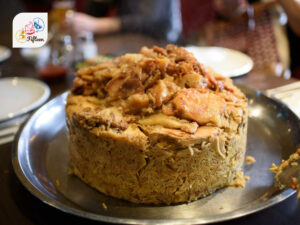
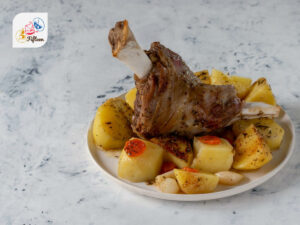
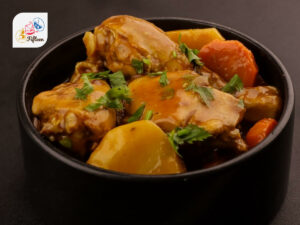
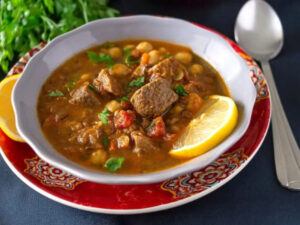
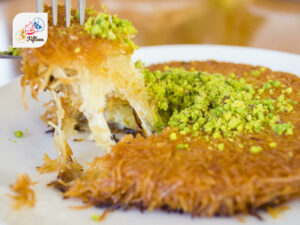
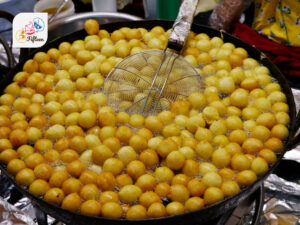
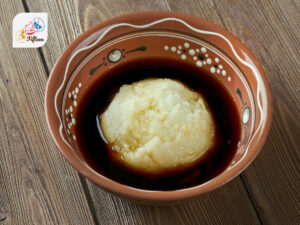
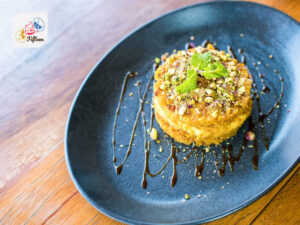
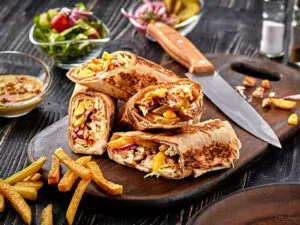
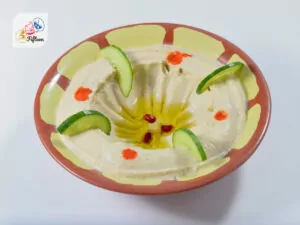
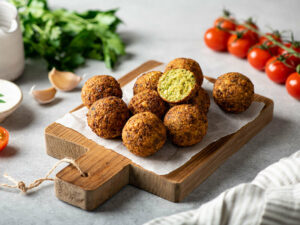
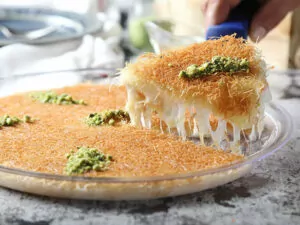
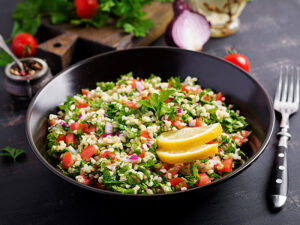
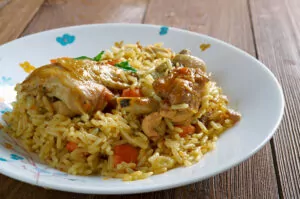
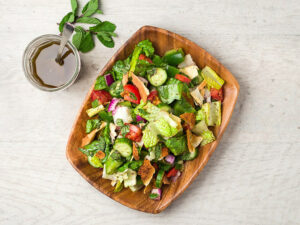
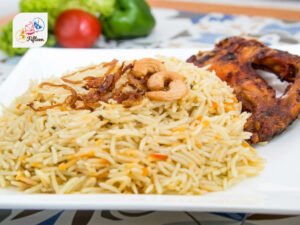
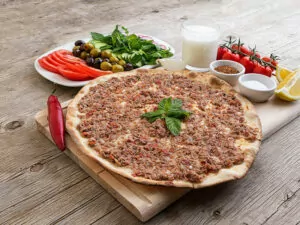
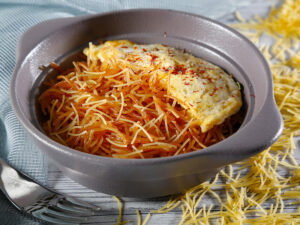
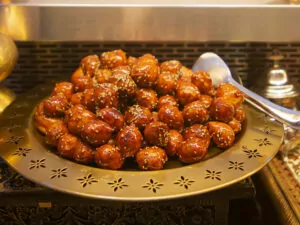
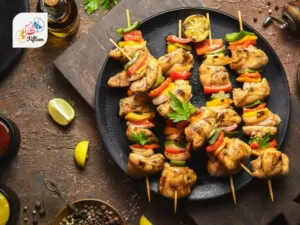
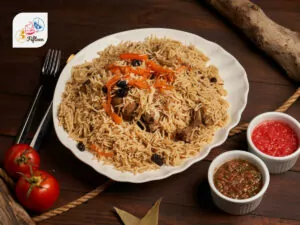
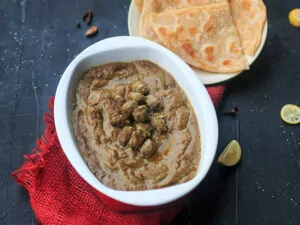
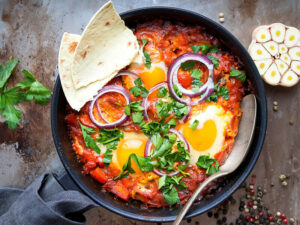
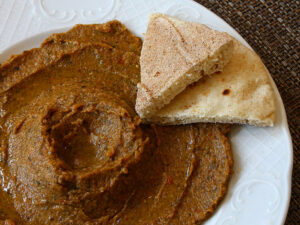
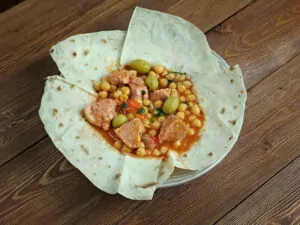

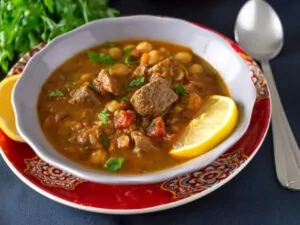
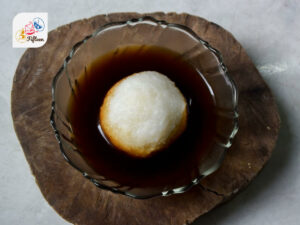
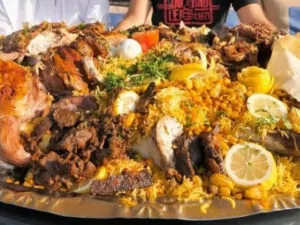
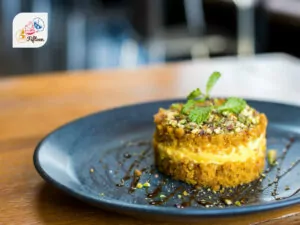
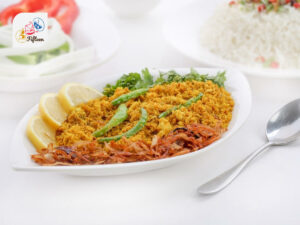
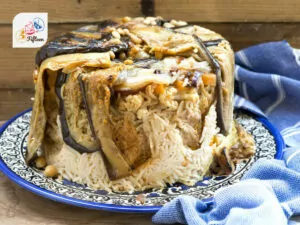
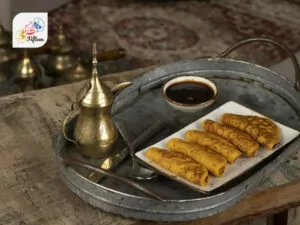
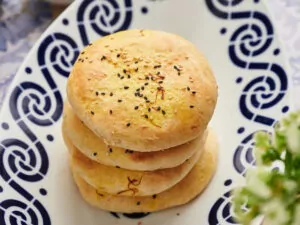
Jamie Scott
Editor in Chief, Senior Content Writer
Expertise
Home Cooking, Meal Planning, Recipe Development, Baking and Pastry, Food Editor, Cooking-video Maker, Western Food Evaluation Expert
Education
Le Cordon Bleu College of Culinary Arts
Local Community College, New York, NY
Jamie Scott is a skilled culinary expert and content creator specializing in Western cuisine. With over 15 years in the culinary field and formal training from Le Cordon Bleu, Paris, Jamie deeply understands how to blend nutrition with delicious flavors. His passion for cooking matches his commitment to making healthy eating accessible and enjoyable.
On Fifteen.net, Jamie brings a fresh perspective to classic dishes and beverages, offering readers insightful recipes, cooking tips, and a fresh view on meal planning that emphasizes taste, health, and simplicity.